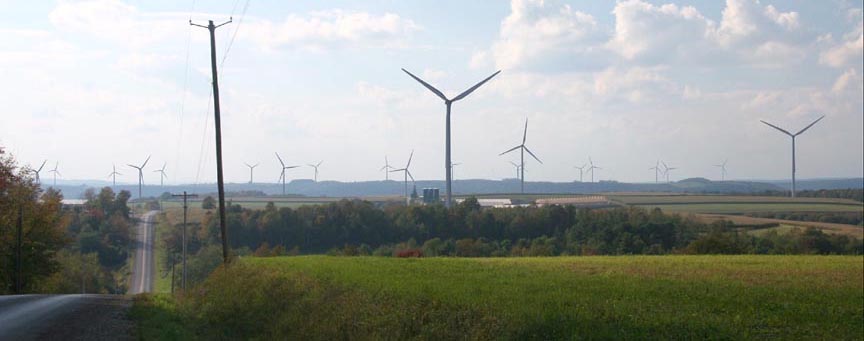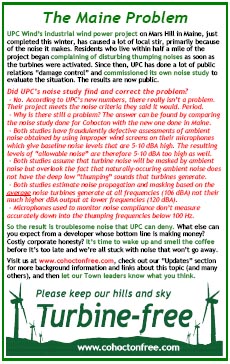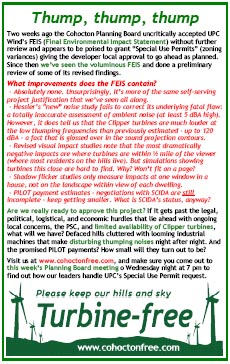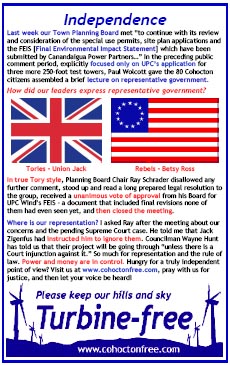VN 7/31 - Visual Impacts?

Over the past 15 months the leadership and residents of Cohocton have been flooded with data and analysis by UPC Wind as part of its lengthy application process. Why does it take so long to get a $250 million industrial power plant approved, anyway, especially if it's a "no-brainer" with no downside? After a while these DEIS, SDEIS, FEIS, etc. reports get so tiresome that people hardly read them any more. "Let's just get the project done," they say. Well, actually there are negative impacts - visual, noise, property values, and political corruption, to name several. Buried in UPC's most recent FEIS, for example, are some interesting findings about visual impact.
What do UPC's hired reviewers have to say?
"Visual impact of the project was increased in Viewpoint 110 with the addition of a foreground turbine to the view. The foreground turbine (approximately 0.25 mile from the viewer) presents significant scale contrast and becomes a dominant feature in the view. The composite visual impact rating from this viewpoint increased from 2.50 to 3.54 [scale 1.0-5.0]. This is consistent with findings of the VIA and SVIA, that viewpoints which include turbines at foreground distances (i.e., under 0.5 mile) are likely to have the greatest visual impact." (quote from page 29 in UPC's 319-page FEIS)
Well, where might we find turbines closer than half a mile? Answer: Along every road and near almost every house on Lent, Pine, Dutch, and Brown Hills. Won't that be pretty? Did UPC's study include many of these bad views? No, only one - they're not very good for selling their project.
Why should we trust a company that hides the truth at almost every turn? Browse our "Updates" section with special attention to the items labeled "Local Politics," come out to the "Special Meetings" of our Town Boards this week on Tuesday July 31st and Thursday August 2nd to see how our current leadership is handling things, and then help get out the vote this fall for people who will examine the facts more carefully and genuinely listen to all of us.
Labels: Cohocton, Disadvantages











